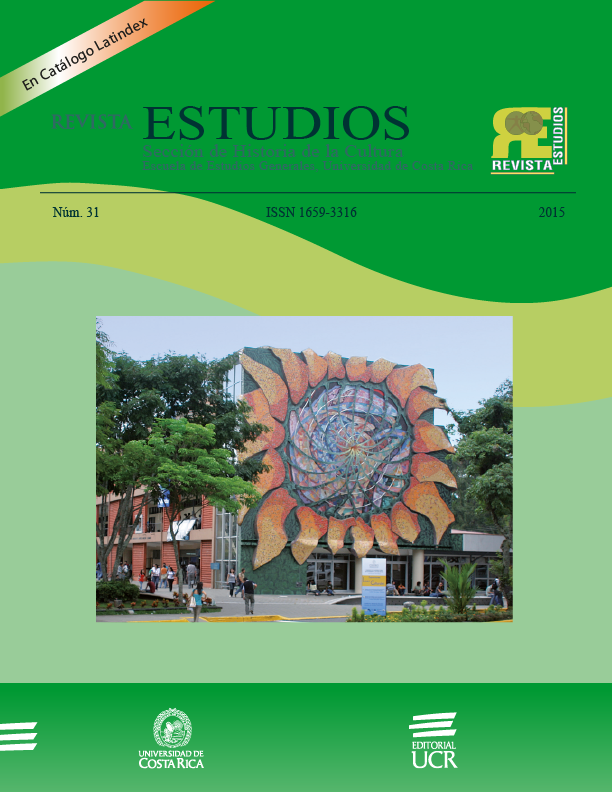Abstract
The following article aims to problematize the socio-cultural and socio-historical processes that mark the insertion of Calypso Limonense as peripheral culture into ideological structures of the nation state and the Costa Rican hegemonic culture. The first two sections of the article made a general characterization of the dynamics of accumulation, racism and marginalization of Caribbean social space where calypso arises. The third, fourth and fifth sections are used to analyze the contradictory dynamics of inclusion, cannibalization, identity struggle and commodification, in tensionReferences
Referencias bibliográficas
Balibar, E. (1991). ¿Existe un neorracismo?. En I. Wallerstein, y E. Balibar, Raza, Nación y Clase (pp. 31-48). Madrid: IEPALA.
Caamaño, C. (2006). Desarrollo capitalista, colonialismo y resistencia en Limón. Anuario de Estudios Centroamericanos, Universidad de Costa Rica, 32, 163-193.
de Carvalho, J. J. (2010). ‘Espetacularização ’e ‘canibalização’ das culturas populares na América Latina. Revista ANTHROPOLÓGICAS, ano 14, 21(1), 39-76.
Duncan, Q., y Meléndez, C. (2005). El negro en Costa Rica. San José: Editorial Costa Rica.
Follari, R. (2011). Lo cultural en su lugar dentro de los social. Crítica y Emancipación 6, 65 - 82.
Gólcher, E. (1993). Reflexiones en torno a la identidad nacional costarricense. Anuario de Estudios Centroamericanos, 19(2), 91-99.
Grinberg, V. (2007). Reflexiones sobre distintos modelos de intercambio simbólico entre la cultura afrocaribeña y la cultura hispánica en el caribe costarricense. Respuestas de un calypsonian de Cahuita. Inter·c·a·mbio, 4(5), 205-229.
Hylland Eriksen, T. (2010). Ethnicity and nationalism. Anthropological perspectives. Nueva York: Pluto Press.
Leigh, R. (2001). The Caribbean carretera: Race, space and social liminality in Costa Rica. Bulletin of Latin American Research, 20(1), 46-62.
Marx, C. (1972). El Capital. Crítica de la economía política I. México D.F: Fondo de Cultura Económica.
Molina, I. (2004). Limón blues: Una novela de Ana Cristina Rossi. Rev. Filosofía Univ. Costa Rica, XLII(105), 185-188.
Monestel, M. (2005). Ritmo, canción e identidad. Una historia sociocultural del calipso limonense. San José: Editorial Universidad Estatal a Distancia.
Muller, C. A. (2002). Archiving africanness in sacred song. Ethnomusicology, 46(3), 409-431.
Murillo, C. (1999). La identidad costarricense ante la diversidad cultural ¿Un reto posible? Revista de Historia, 40, 159-176.
Murillo, C. (1999). Vaivén de arraigos y desarraigos: Identidad afrocaribeña en Costa Rica 1870- 1940. Revista de Historia, 39, 187-206.
Putnam, L. (2002). The company they kept: Migrants and the politics of gender in Caribbean Costa Rica, 1870–1960. Chapel Hill: The University of North Carolina Press.
Sojo, C. (2010). Igualiticos: La construcción social de la desigualdad en Costa Rica. San José: PNUD.
Tagg, P. (1989). Open letter: "Black Music", "Afro-American music" and "European Music". Popular Music, 8, 285-298.
Wallerstein, I. (1983). Historical capitalism. London: Verso.

